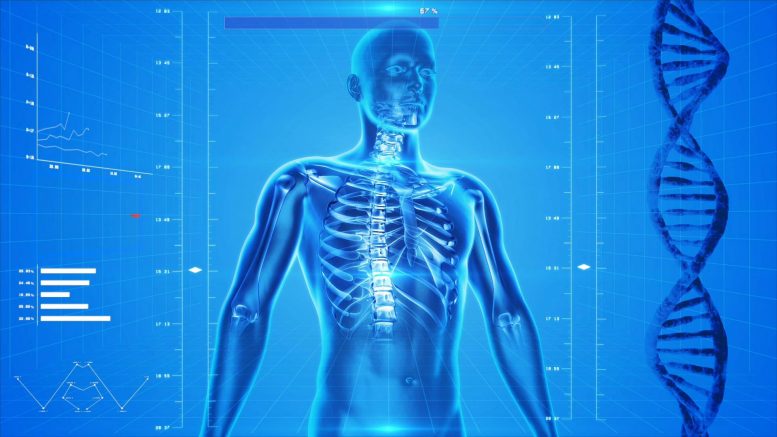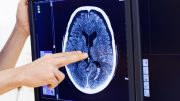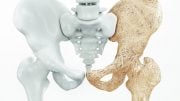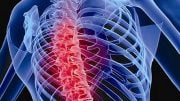
Mice that had hypertension had a 24% reduction in bone volume fraction.
According to a recent mouse study presented at an American Heart Association convention, high blood pressure may accelerate the aging of bones.
According to a recent study presented at the American Heart Association’s Hypertension Scientific Sessions 2022 conference, young mice with high blood pressure exhibited bone loss and osteoporosis-related bone damage similar to older mice.
High blood pressure and osteoporosis are common disorders, and individuals may have both simultaneously. Researchers in this study investigated inflammation linked to high blood pressure in mice and discovered it could be related to osteoporosis.
“Bone marrow is where both new bone and new immune cells are produced. We suspect that more pro-inflammatory immune cells in the bone marrow may be leading to damage of the bone and making it weaker,” said lead study author Elizabeth Maria Hennen, a Ph.D.-candidate in biomedical engineering at Vanderbilt University in Nashville, Tennessee. “By understanding how hypertension contributes to osteoporosis, we may be able to reduce the risk of osteoporosis and better protect people later in life from having fragility fractures and a lower quality of life.”
In order to study the potential link between hypertension and bone aging, researchers in the study compared young mice with artificially induced hypertension to older mice without hypertension. According to Hennen, the mice’s human age equivalents ranged from 47 to 56 years for the older mice and between 20 and 30 years for the younger mice. Twelve young (4 months old) mice were administered angiotensin II, a hormone that causes elevated blood pressure. For six weeks, the young mice were given 490 nanograms/kilogram of angiotensin II. A set of 11 older mice (16 months old) were also given 490 nanograms/kilogram of angiotensin II for six weeks. A buffer solution without angiotensin II was administered to two control groups of 13 young and 9 elderly mice, and these animals did not develop elevated blood pressure.
After six weeks, scientists used micro-computed tomography, an advanced imaging technique, to analyze the bones of mice from all four groups. Bone strength and density were used to determine bone health. Mathematical algorithms were utilized to assess the potential effects of hypertension and aging on the microstructure and strength of bone in mice.
When compared to the young mice without hypertension, the young mice with induced hypertension had a significant 24% reduction in bone volume fraction, an 18% reduction in the thickness of the sponge-like trabecular bone located at the end of long bones, such as femurs and the spinal column, and a 34% reduction in estimated failure force, which is the ability of bones to withstand different types of force.
“Failure force translates into weaker bones. In the spine, bone weakness can lead to vertebral fractures later in life,” Hennen said.
In contrast, the older mice who were given the angiotensin-II infusion did not exhibit similar bone loss. During the study, however, the old mice, with or without high blood pressure, exhibited a reduced bone quality similar to that of the hypertensive young mice.
“In these mice, being hypertensive at a younger age essentially aged bones as if they were 15-25 human years older,” Hennen said.
To assess the impact of inflammation on bone health of the mice, researchers analyzed the bone marrow using flow cytometry. This tool allowed researchers to identify individual cells and to sort out specific immune cells. In the hypertensive young mice, they found an increase in the number of inflammatory signaling molecules, indicating an increase in inflammation in the bones when compared to the young mice that did not receive angiotensin II.
“This increase in active immune cells tells us that the older mice are more inflamed overall and that a continued state of inflammation, whether they had high blood pressure or not, may have an impact on bone health,” Hennen said. “It appeared that high blood pressure was adjusting the bone remodeling process toward bone loss, rather than bone gain or bone equilibrium, in the hypertensive young mice. As a result, bones will be weaker, leading to an increased risk for osteoporosis and fragility fracture. In humans, this might mean that we should screen for osteoporosis in people with high blood pressure.”
Hennen adds that these findings may help researchers identify the immune cells and mechanisms that play a role in human bone health. This depth of knowledge may lead to new approaches to preventing osteoporosis in early adulthood.
The study’s limitations include that it is only descriptive, so additional research is needed to investigate how specifically the different types of immune cells may contribute to bone loss. In addition, it is unknown whether a similar link exists in humans, so similar research in humans is needed to confirm these findings.
Reference: “Reduction Of Bone Quality In A Murine Model Of Essential Hypertension Relative To Age” by Elizabeth M Hennen, Mingfang Ao, Nestor de la Visitacion, Wei Chen, Sasidhar Uppuganti, Elizabeth Rendina-Ruedy, Jeffry Nyman and David G Harrison, 7 September 2022, Hypertension.
DOI: 10.1161/hyp.79.suppl_1.132
The study was funded by the National Institutes of Health, Vanderbilt University, and Vanderbilt University Medical Center.









“Vanderbilt University Medical Center is one that regularly blocks my email attempts to inform allergy ignorant doctors of what underlies most chronic disease or Elizabeth would probably already have the answers to her questions. A victim of allergy aggravating FDA approved toxic ‘cultured-free’ MSG with allergy avoidance of animal allergen proteins since 1981 and mostly untreated high blood pressure (HPB) since 1992, with sequential deficiencies of calcium and phosphorus discovered at-home in 2010 and 2021, respectively, in conjunction with almost a decade of ultrasound bone density scans to reference I’m almost an expert now on how HBP and osteoporosis are comorbidities, not cause and effect.”